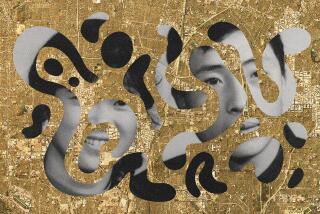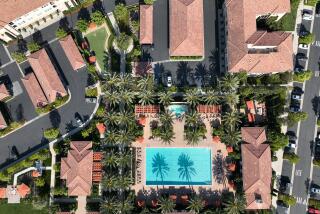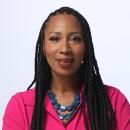Mosque-building rises as Muslim American clout grows
The opening this weekend of a new mosque in Rowland Heights is powerful evidence of a building boom of such facilities in Southern California and around the nation.
Over the last several years, new mosques have risen in Mission Viejo, Irvine, Anaheim, Reseda, Rancho Cucamonga, Rosemead, Diamond Bar and Tustin. Additional mosques are slated for Temecula, Ontario, Lomita and Corona.
Strikingly, the new mosques have been funded entirely by local Muslims, who began settling in the region in the 1960s. Before 2001, new mosques were often funded by foreigners; the Saudis financed the King Fahad Mosque in Culver City, and Libyans helped build Masjid Omar near USC.
Stricter government scrutiny of foreign investments from Islamic countries after the Sept. 11 terrorist attacks, along with reluctance by local Muslims about accepting foreign money, helped change the practices, according to Shakeel Syed, executive director of the Islamic Shura Council of Southern California.
“Post 9/11, the dynamic completely changed,” Syed said. “The Muslim community at large in North America realized it is better if we develop our own funding, however long it takes.”
Syed said many Muslims have built successful businesses over the last few decades and are now positioned to give back. Some did relatively well during the recession, as they were able to buy undervalued properties while not taking on risky investments or interest-incurring debt, which is barred in Islam, he said.
The majority of mosques in the United States are still existing buildings converted to an Islamic prayer space. But the number of newly built structures — such as the new Islamic Center of San Gabriel Valley — has doubled in the last decade, to 632 in 2011 from 314 in 2000, according to the American Mosque 2011 study. Among metropolitan areas, Southern California is home to 120 mosques, second only to the New York area, the study found. (Estimates of the Muslim American population vary, but a 2011 Pew Research Center study placed it at about 2.7 million nationwide and growing.)
At the new Masjid Qubaa in Rowland Heights, several members donated $100,000, and a few gave $500,000. The women held a fashion show, which raised $100,000. Dozens of skilled craftsmen contributed services and construction materials, which significantly reduced the structure’s cost.
Syed Rizvi, the center’s president, reflects the arc of success experienced by some of the community’s more affluent members. He arrived in the United States from Pakistan in 1975 with a single suitcase and $7,500. But he had a medical degree and eventually opened several kidney dialysis centers. He donated a six-figure sum to the project, said Yasmeen Khan, a mosque leader.
“We were professionals, but we were not rich,” Rizvi said. “America gave that opportunity for us all.”
The mosque construction attracted no local opposition — unlike projects in Temecula, Lomita and Ontario. There, neighbors raised concerns about potential problems with noise, traffic and parking — objections Muslims have successfully addressed, according to Ameena Mirza Qazi of the Council on American-Islamic Relations. Some of those debates were marked by anti-Islam comments and fears about terrorism expressed by some opponents.
ALSO:
Supermoon photos, videos a big hit on social media
LAPD’s firing of Christopher Dorner was justified, report says
After FBI raid, Sen. Ronald Calderon forms legal defense fund
More to Read
Sign up for Essential California
The most important California stories and recommendations in your inbox every morning.
You may occasionally receive promotional content from the Los Angeles Times.












